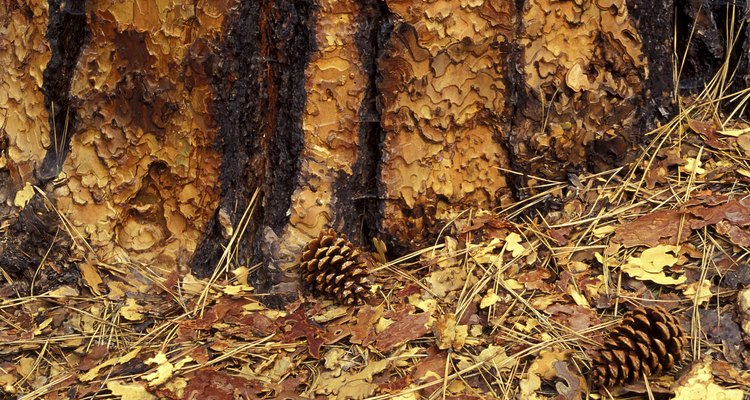
Purestock/Purestock/Getty Images
In addition to being used as a wood preservative, pine tar has traditionally been used as an ointment and a cleanser. When pine bark, needles and cones are carbonized in a cauldron or open flame, the natural pine oil is preserved and easily mixed with a base, such as beeswax or lye. From soaps to ointments, pine tar can then be used to treat cuts, prevent skin conditions, or as an everyday household cleaner.
Treating Wounds and Injuries

Astrid Gast/iStock/Getty Images
The use of pine tar ointment as an antibacterial to treat wounds dates back centuries. There is nominal evidence that ancient civilizations of the Near East and Sumeria used pine oils and ointments to cleanse wounds and prevent gangrene. In fact, in lieu of bathing, pine tar and its derivatives can be used to keep the skin and hair clean and free of parasites, including fleas. This is one reason tins of pine tar ointment are sought after by outdoor enthusiasts and long-distance athletes.
Cleanser

Ingram Publishing/Ingram Publishing/Getty Images
Given that they are infused with pine oil, pine tar ointments can be used as everyday household cleaners. Pine tar ointment on a rag can effectively disinfect and shine any wooden surface. A few drops of pine oil in a spray bottle of warm water can make a powerful furniture or carpet deodorizer. In an odorous bathroom, simply daub behind the toilet, under the sink and at the base of the bathtub.
Skin Care
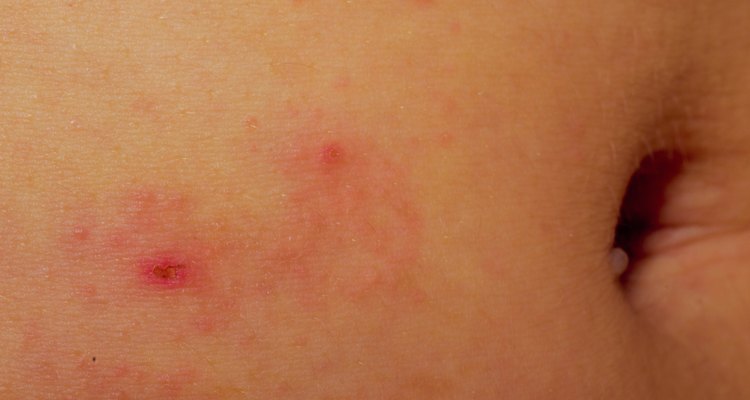
defun/iStock/Getty Images
The most common use of pine tar ointment is as a skin care product. Specifically, it has been most commonly used to treat and prevent skin disorders such as psoriasis, eczema, scabies and more. Applying the pine tar ointment directly to the skin and rubbing until absorbed is the recommended treatment. The ointment can also be used to alleviate the itching and peeling associated with sunburns, and is commonly used to heal cracked heels and dry elbows. Pine tar soap can be used as an effective treatment for oily skin or blocked pores.
Caveats

Przemyslaw Wasilewski/iStock/Getty Images
Though pine tar ointment has a host of uses, it can be a bit overwhelming for some users. There's a discrepancy between any two brands of pine tar ointment. Some use higher concentrations of pine tar; others use more beeswax or lye. If your skin is red or irritated after using a particular brand of ointment, stop using it and use one with fewer active pine tar ingredients.
Related Articles

How to Fix an Irritated Upper Lip After ...

Sauna Cleaning Requirements

How to Remove Betadine From the Skin
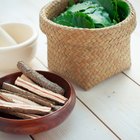
Neem Bark Benefits

The Benefits of Lemongrass for Skin

What Is Aloe Good For?

How to Clean Scuffed Up Rain Boots

What Is Camphor Phenol?

How to Heal an Inflamed Bikini Area

Can I Scotchguard My Vera Bradley ...
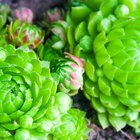
Plants That Heal Wounds

How to Remove Foam From Vinyl Window ...

Alternatives for Toothbrushes

How to Get Pine Tar Out of Polyester
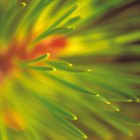
How to Preserve Pine Needles

How to Get Rid of Irritation After ...
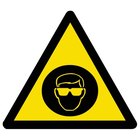
How to Sterilize Safety Goggles

What Are the Benefits of Aloe Vera & ...

How to Get Biro off Faux Leather

Uses for Castor Oil on the Skin
References
Resources
Writer Bio
Victor Fonseca started writing professionally in 1998. His specialties are history, popular culture, and information technology. He holds a Bachelor of Arts in political science from Southern Methodist University and spent a year studying at the American University of Rome.
Photo Credits
Purestock/Purestock/Getty Images